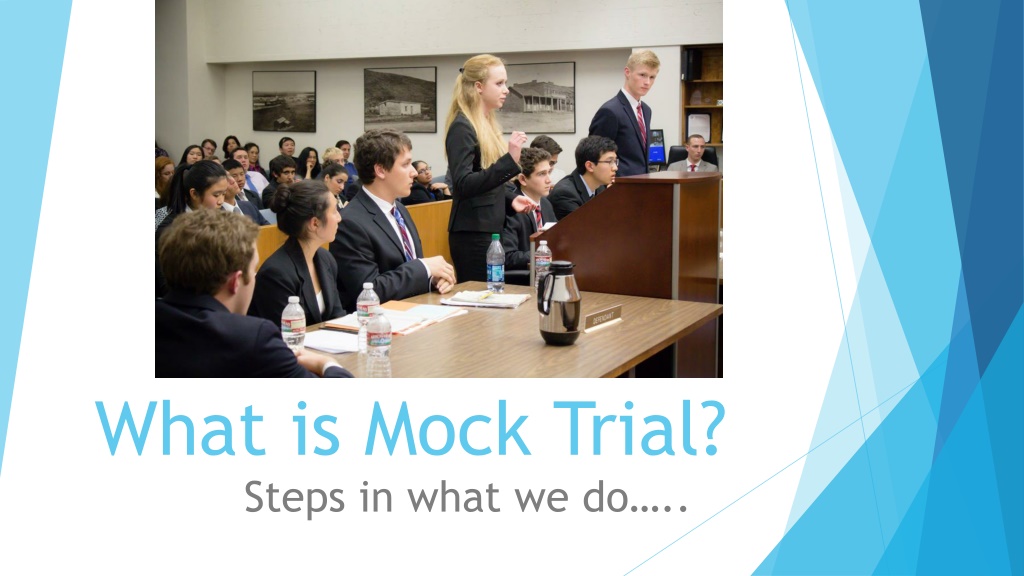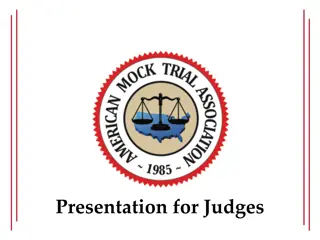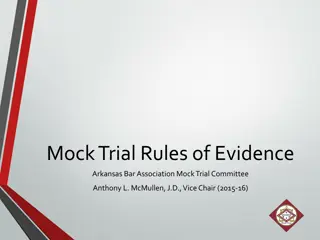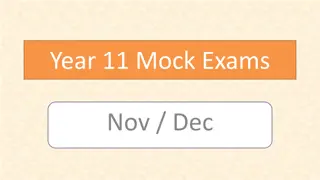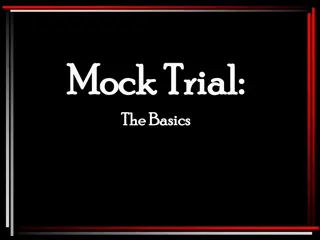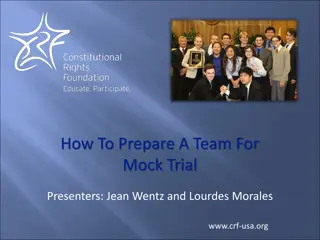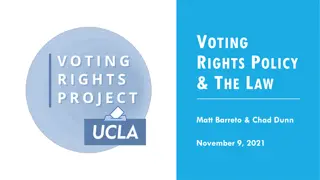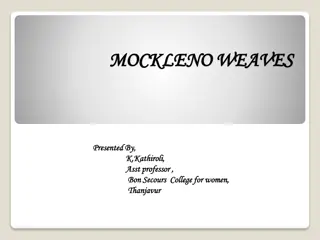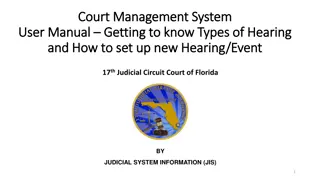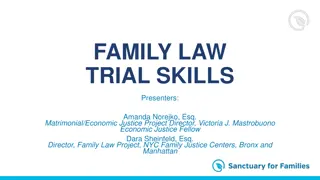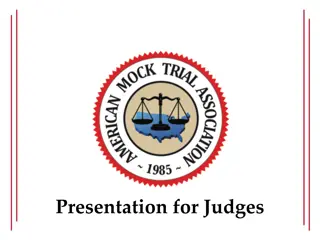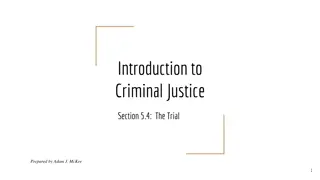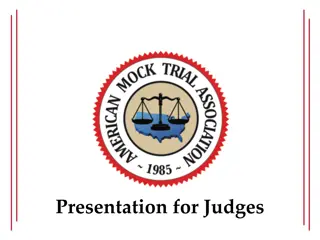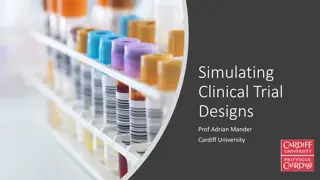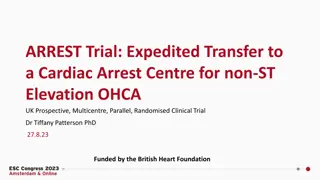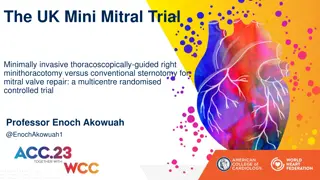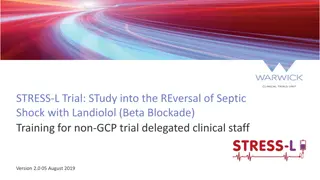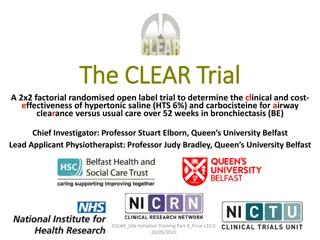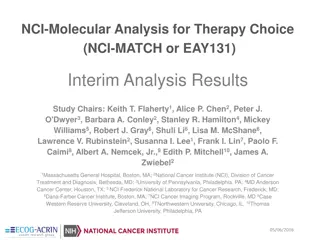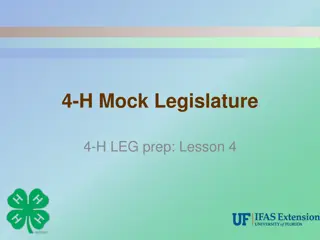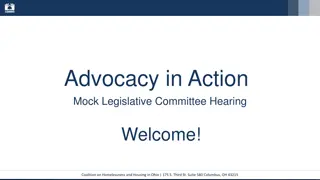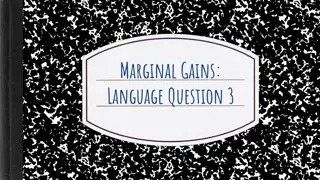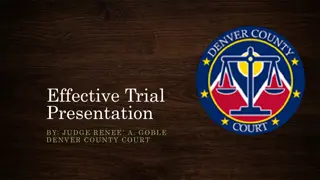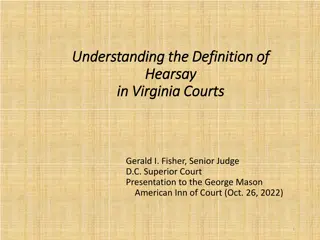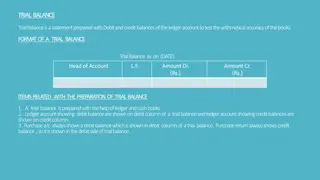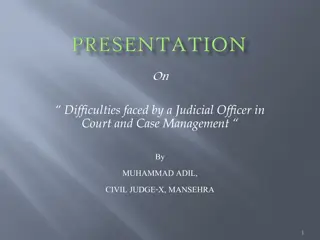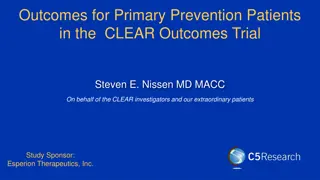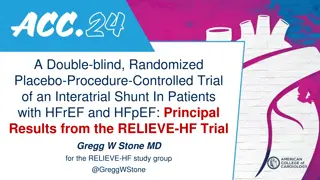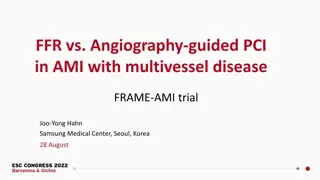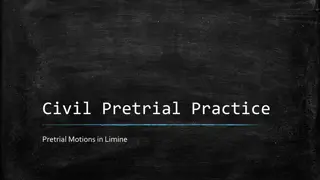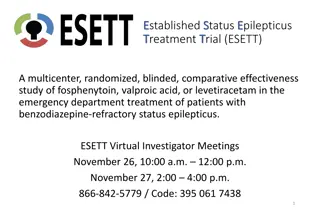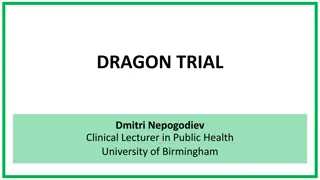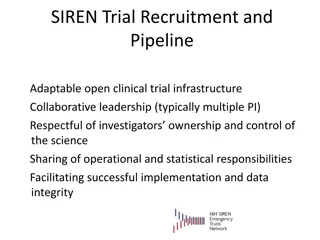Mock Trial Process Explained: From Preparation to Presentation
In a mock trial, participants prepare and present cases as legal teams, acting as attorneys and witnesses. The process involves selecting roles, preparing statements, and presenting arguments before a judge. Teams must prove their case with evidence and cross-examination. The article details the steps, from forming teams to presenting opening statements and witness testimonies.
Download Presentation

Please find below an Image/Link to download the presentation.
The content on the website is provided AS IS for your information and personal use only. It may not be sold, licensed, or shared on other websites without obtaining consent from the author. Download presentation by click this link. If you encounter any issues during the download, it is possible that the publisher has removed the file from their server.
E N D
Presentation Transcript
What is Mock Trial? Steps in what we do ..
AGENDA ITEMS 1.Vote for Vice President (Sam, Kyra, Maddie Z or Kilcoyne) 2.Hoodies 3.Groups (Group Leaders: Amber, Sam, Aneeqa, Kyra, Maddie and Evan K)
PREPARATION Once we get the case, we create 2 teams (Plaintiff/Prosecution and Defense) Decide roles (Attorneys and Witnesses) 2 months to prepare the case
HOW Witnesses need to know their statements 100% (No questions) Attorneys need to know the ENTIRE case Relevant questions and focus on the law that the case is about Anything in a witnesses statement can be asked at any time
#1 Step 1 1 Attorney must stand, introduce the entire legal team (Lawyers) and all the witness, as well as what roles they will play, as well as tell the judge which side they represent (Plaintiff or defense) Housekeeping issues (Team decides), things like evidence, where to stand and more
#2 First Opening Statement: Plaintiff/Prosecution Opening Statement: Defense Plaintiff/Prosecution creates theory of case, what they will prove and how they will meet the burden of proof Defense gets to answer the opening statement of the prosecution/plaintiff and tells the judge how the plaintiff/prosecution will fail to meet their burden, possibly give another explanation and show how their client is not liable (Plaintiff) or not guilty (Prosecution)
Example Jogger Story (See side board)
#3 Plaintiff/Prosecution case The Plaintiff/Prosecution has the burden to prove their case so they call their 3 witnesses first Order determined by you Link statements if you can Use evidence as much as possible Connect the proof with the burden
How to Direct Examine NO leading questions (Telling the witness the answer) Who, what, where, when, why, how and describe DO NOT assume the court knows anything about the subject NO (Or very limited) pronouns Relevant questions (About the case) Opinions can only be given by experts (Some exceptions)
#4 Defense Cross Examination Cross examination is when the opposing lawyer asks questions to attack the credibility of the witness Credibility: Truthfulness, bias, memory Leading questions where the attorney testifies for the witness Yes/No answers only
How to cross examine LEAD on EVERY question (Isnt it true that .) Tell the witness the answer and get them to agree with a yes If they fight, follow up with a So, that s a yes then right or re-ask to make the point Re focus the witness if needed NEVER ASK A QUESTION YOU DON T KNOW THE ANSWER TO (Biggest rule!)
#7 Resting After all witnesses for the plaintiff/Prosecution have been called, one attorney for the plaintiff/prosecution must stand and say The Plaintiff/Prosecution rests
#8-10 Defense Case Same as Plaintiff/Prosecution by calling your witnesses in order Cross examination by the plaintiff/ prosecution Use of exhibits (If needed) Defense does not need to prove anything, as they are innocent Defense rests when done
#11 Defense Closing Arguments Defense gets to make their closing argument first Tie together evidence and testimony Explain what everything means Only place a true argument is made Explain how burden of proof was NOT met by the plaintiff/prosecution
#12 Plaintiff Closing Arguments Plaintiff/Prosecution gets the last word which is an advantage Can respond to what claims the defense makes Tie together evidence and testimony Explain what everything means Clearly explain what the burden of proof is and how it was met
Times. Opening Statements: No more than 5 minutes for each side Direct examinations: 10 minutes total including objections Cross examinations: 10 minutes total including objections Closing arguments: 10 minutes total
